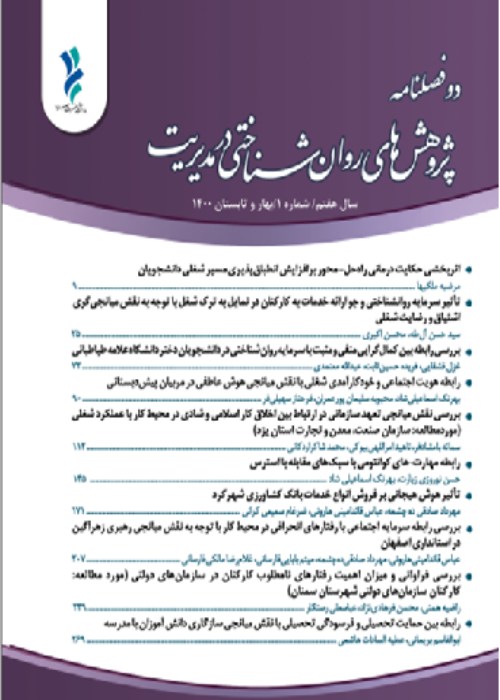Designing an interpretative structural model of organizational culture based on knowledge: Presenting a new design approach based on fuzzy systems
Organizational culture is one of the most fundamental areas of change and transformation in the organization and has a special place in the topics related to knowledge management and organizational behavior. Knowledge sharing has also been proposed as a vital element for organizations to expand integrated services, resource sharing, efforts to promote organizational learning, creativity, and innovation (Aristopour et al., 2021(. Weak organizational culture is one of the ineffective factors of any organization. Today, the knowledge of human forces is considered the most valuable and important capital and asset of companies and organizations. Knowledge is one of the most important competitive advantages in the organization in the field of competition, and improving the productivity and performance of the organization through the effective use of human power is an important issue and concern in organizations (Shams et al., 2022). Today, knowledge is the most valuable and important asset and competitive advantage of organizations. Organizational culture based on knowledge is one of the important and main components of behavioral knowledge in organizations and has been the focus of organizational and behavioral thinkers in recent years. One of the requirements of knowledge management is designing a model and formulating an organizational culture based on knowledge, which is addressed in this research. Therefore, the current research aims to design an interpretative structural model of knowledge-based organizational culture to create a platform for the effective implementation of knowledge management in a fuzzy environment.
Design/Methodology/Approach:
The current research is based on the paradigm of positivism and is applied in terms of the type and purpose of the research. In terms of the data collection method, it is descriptive-analytical. The process of carrying out this research includes two main stages: Jager's fuzzy approach and structural-interpretive modeling. The statistical population of this research includes university experts from whom seven samples were selected. In the current research, first, the important elements in the knowledge-based organizational culture were identified with a fuzzy approach, and then the type of relationships was identified by experts using the interpretive structural modeling method.
Based on data analysis and with regard to , the seven elements were determined. The ISM model includes three levels. At the lowest level, i.e. the third level, strengthening of communication and interactions, designing of participation processes, and strengthening of group workspace are recognized as the influential elements of the model, and at the highest level, everyone's accountability is the most dependent element of the model; Because according to the diagram of penetration power and degree of dependence, the higher the elements are, the lower their stimulating power and the greater the degree of dependence. The insight that this model gives to managers and decision-makers can help them strengthen organizational culture to improve organizational knowledge. Also, this model helps them to have a comprehensive view of the complex relationships between the influencing factors in the field of knowledge-based organizational culture and to identify priorities and have a proper direction in their policies.
According to the results, it is suggested to revise and implement a new process in the design process of organizational culture, especially in knowledge-based organizations. Also, for future research, it is suggested to localize the designed organizational culture model in different organizations and institutions according to the specific conditions of each institution. The dimensions and elements of the model can also be of interest to researchers and they can be investigated, developed, and compared with the model elements of this research.
- حق عضویت دریافتی صرف حمایت از نشریات عضو و نگهداری، تکمیل و توسعه مگیران میشود.
- پرداخت حق اشتراک و دانلود مقالات اجازه بازنشر آن در سایر رسانههای چاپی و دیجیتال را به کاربر نمیدهد.


